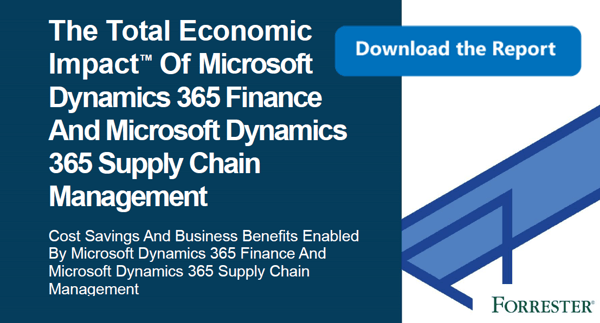Manufacturers and distribution companies have a lot to juggle from tracking inventory and operations to communicating with their vendors and buyers, which is why so many supply chain companies turn to Enterprise Resource Planning (ERP) software to assist them with their day-to-day operations, as well as special projects. Some of them could be making one fatal mistake without even knowing it…their ERP could have lost its profitability.
As with most things, ERP begins to become outdated after about 8 years. At that point, your company has two options:
1) Upgrade your current software
2) Replace your current software
Maybe your company knows it’s time for an update, but the timing is off. Or, maybe they don't want to update the current software because they aren't really happy with the current version, so why upgrade? However, the idea of trying a new software seems too risky. It can be a conundrum. If you really want to see how much your company can gain from a new ERP solution, examine the overall value of the ERP.
A quick and easy way to look at the value of replacing your ERP software is to estimate the potential return on investment (ROI). In this article, we will be teaching you different methods for calculating the ROI of implementing ERP.
The first and most beneficial thing to do is to evaluate the state of your company and see how much it could potentially benefit from replacing the current ERP. If you are considering getting a new ERP solution, the easiest way to get your ERP implementation project funded is to gather your baseline measurements to then compare to the estimated results. This way, you can measure the success of the project.
How to Calculate ROI
Measuring the ROI of your potential ERP system starts with knowing how much the software costs and how much it should increase revenue. Once you have those figures, there are 2 methods for calculating ROI.
To better show you how they work, let me set up an example. The scenario is about a fictional company we’re going to call Astatic Manufacturer, LLC. Astatic Manufacturer, LLC. knows their desired ERP will cost them $125,000. Based on projection they anticipate the new software will save the company $175,000 over the next 5 years.
Method 1: The first method they can use to calculate ROI is to divide the total benefits by the total cost.
Equation: [Total Benefits]/[Total Costs]=Return On Investment
Total Benefits= $175,000, Total Costs= $125,000
Calculate ROI: $175,000/ $125,000= 1.4 or 140%
Method 2: The second method is to divide the net profit by the total costs
Equation: [Total Benefits]-[Total Costs]=Net Profit, then [Net Profit]/[Total Costs]=Return On Investment
Total Benefits= $175,000, Total Costs= $125,000
- Find Net Profit: $175,000-$125,000= $50,000
Net profit =$50,000
- Calculate ROI: $50,000/$125,000=.4 or 40%
Looking at the 2 methods you will probably notice that they gave you 2 different answers. This is because the first method is calculating the overall return on investment while the second method is looking for overall ROI gain. Which method you use depends on how your company wants to look at it.
Some companies would prefer to calculate their annual ROI instead of looking at the five-year calculation that was shown above. You can also find the annual return gain with an equation.
Annual Return Method:
Equation: ([Total Benefits]/[Total Costs])^(1/[Years])-1=Annual Return
Total Benefits= $175,000, Total Costs= $125,000, Years= 5
Calculate Annual ROI: (175000/125000)^(1/5)-1= .07 or 7%
As a disclaimer, the annual return will not be the same each year. This will happen for two main reasons:
- Many of the costs are acquired in the starting months or years of the implementation.
- While some of the benefits are acquired in the beginning, the bulk of the benefits associated with implementing a new ERP system accrue over time.
With these facts in mind, it is important to understand that the return may be negative for the first year, but it is typically earned back within the following year or two. As the years go by, having the ERP can drastically increase ROI. Innovations in technology like a cloud-based ERP, such as Acumatica, can more than double your ROI.
You may be thinking that you can’t afford to get a new ERP system, but have you ever considered how much your current software is costing you? If that doesn’t scare you, then try calculating the total cost of ownership on your current ERP.
To learn more about the benefits of replacing your old ERP system, contact our team at info@clientsfirst-tx.com, or call 800-331-8382. Clients First is an expert at implementing Acumatica, Dynamics AX, and Dynamics 365 (which also made it into Nucleus Research’s “leader” quadrant). We implement and support clients across the U.S.A. and in 11 countries and counting. Our team of professionals is ready to help implement the best finance and operations solutions for manufacturers, distributors, project-based manufacturers, MRO (maintenance, repair, and overhaul), and professional services.
 How to Calculate ROI for ERP">
How to Calculate ROI for ERP">
